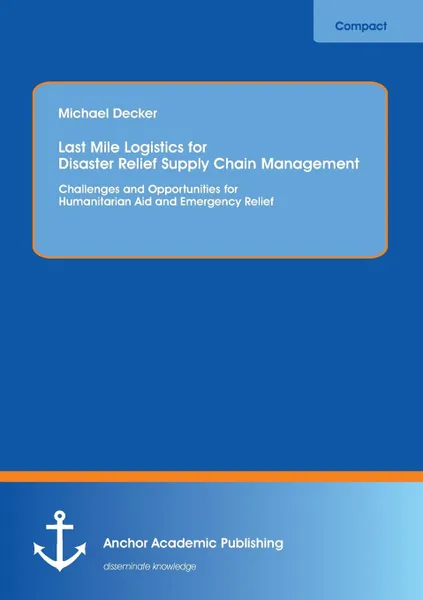Last Mile Logistics for Disaster Relief Supply Chain Management. Challenges and Opportunities for Humanitarian Aid and Emergency Relief 12+
Автор: Michael Decker
40 страниц
Категория: Менеджмент и управление
ISBN: 9783954891580
Язык: Английский
📓 Due to the latest catastrophes caused by both man and nature, humanitarian logistics has received increasing interest from academics, practitioners and specialists. These interests are increased as well by an expanding market of disaster relief and by the fact that disaster relief supply chains are complex and dynamic, not to mention that they have a lot of uncertainties that make operations very complicated. Especially in disaster relief, the supply chains have to be fast, agile and flexible in order to rapidly provide the appropriate amount, and type of emergency supplies, to minimize human suffering or death. The last mile distribution is the final stage of the disaster relief supply chain, i.e. the delivery of relief supplies from local distribution centres to beneficiaries affected by disasters.The aim of this paper is to give an overview of supply chains in disaster relief, identify the main problems of the last mile distribution in disaster relief operations, describe optimization possibilities of the private sector, and examine the applicability for disaster situations.
Мнения
